The NVIDIA GeForce RTX 4090 Founders Edition, or FE, might just be the most desirable air-cooled RTX 4090 on the market. For example, both the ASUS ROG Strix GeForce RTX 4090 OC and ASUS TUF RTX 4090 OC GPUs that we reviewed are great, but NVIDIA has its own cooling solution that makes the FE card more compact. One of the biggest challenges we have faced with the 3rd party cards is that they have blocked other motherboard slots for M.2, PCIe, and so forth due to their enormous sizes. The Founders Edition is huge, but it is better for not blocking other motherboard slots. It is also one of the lower-cost NVIDIA GeForce RTX 4090 GPUs on the market, albeit also one of the hardest to get.
If you want to learn more about the architecture, STH covered the NVIDIA GeForce RTX 4000 Ada Lovelace series architecture in this article, NVIDIA GTC 2022 Fall Keynote Coverage. We are not going to cover that in this review, but you can find more on that by following the link.
NVIDIA GeForce RTX 4090 Founders Edition
Let us check out the front of the card.
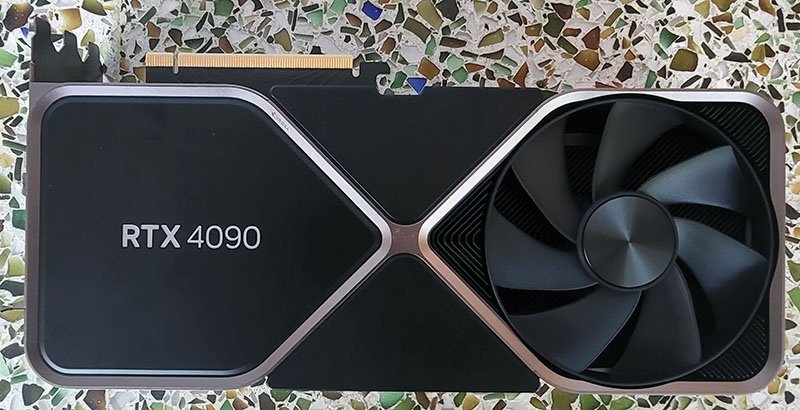
The FE version is slightly shorter than the Strix and TUF at 304mm 12″. The shorter length will help in fitting in tight cases.
The GeForce RTX 4090 FE has cooling fans on both sides. This is different compared to many of the 3rd party RTX 4090’s with fans on a single side.
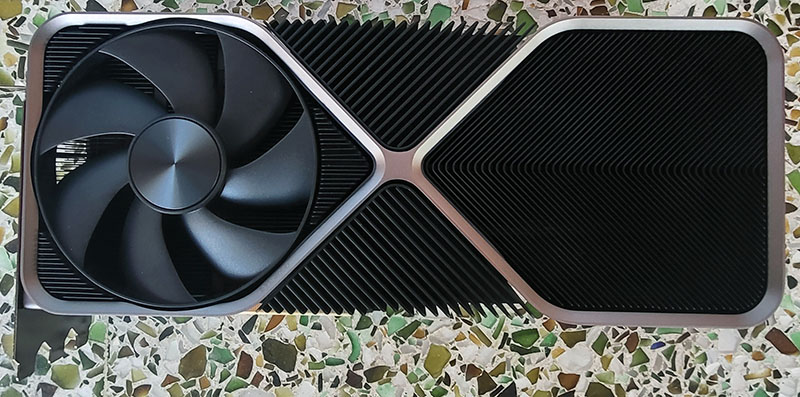
The back of the GeForce RTX 4090 FE looks just like the front, but with the fan on the opposite side and heatsink fins instead of the branding plate.
The IO end has 3x DisplayPort 1.4a and 1x native 2.1a HDMI ports. The card is also nowhere near the size of a PCIe bracket. It extends much higher.
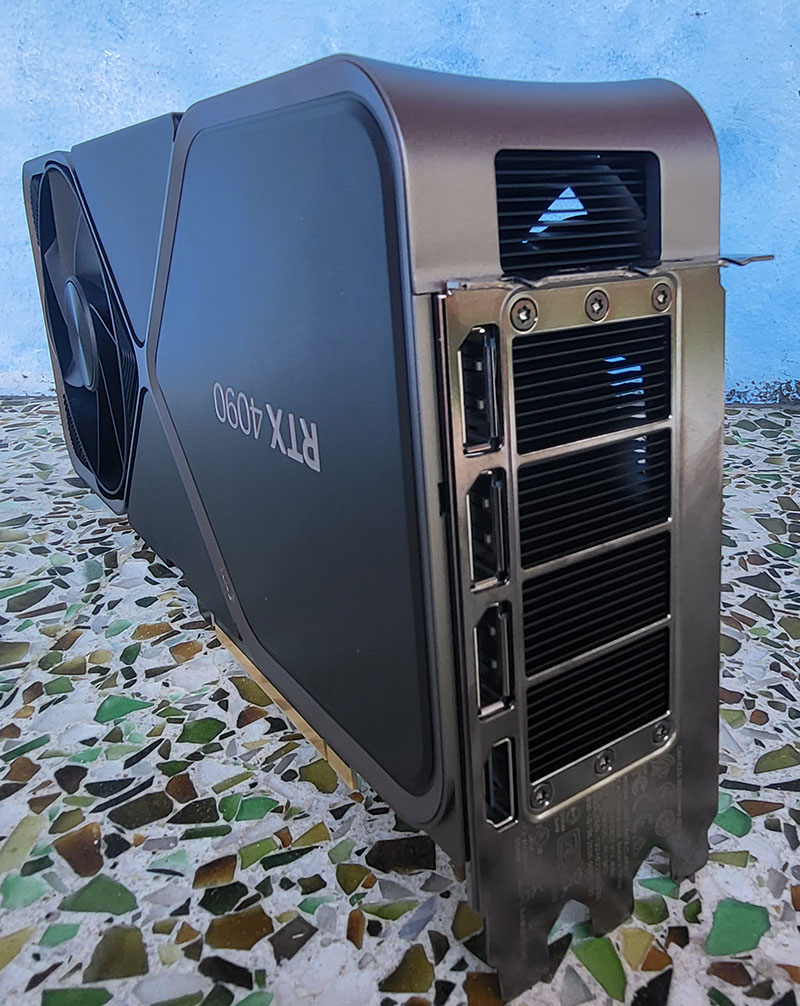
The 4090 FE is not as wide as the others at 3 slots vs. the Strix at 3.5 slots and the TUF at 3.65. In motherboards that support the newer 3-slot spacing, one can fit another smaller card next to this, but it is tight.
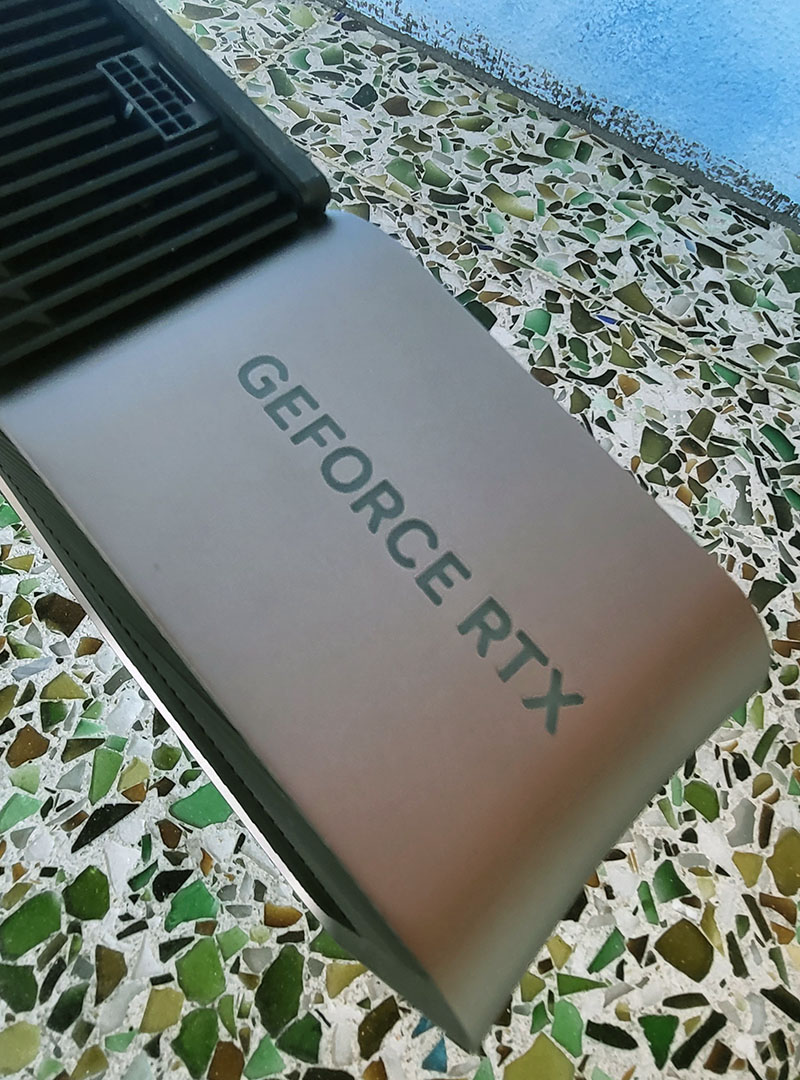
The only LED on the card is the GeForce RTX logo.
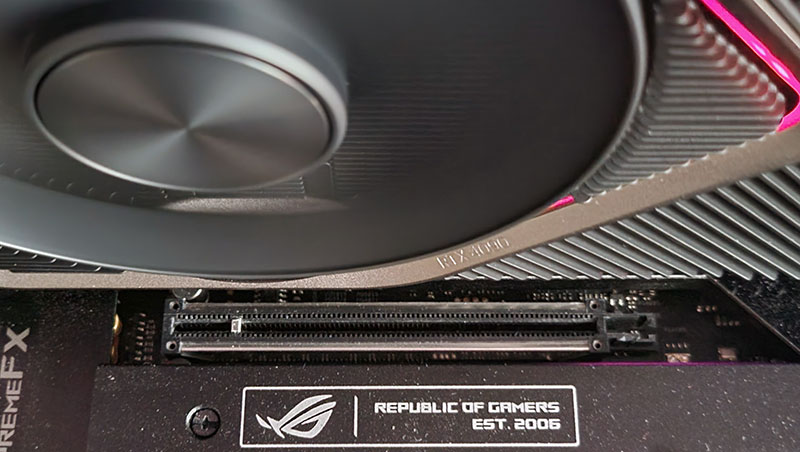
As you can see, the second PCIe slot is fully exposed, but the space is tight.
Now let us move on to the NVIDIA GeForce RTX 4090 FE Specifications.

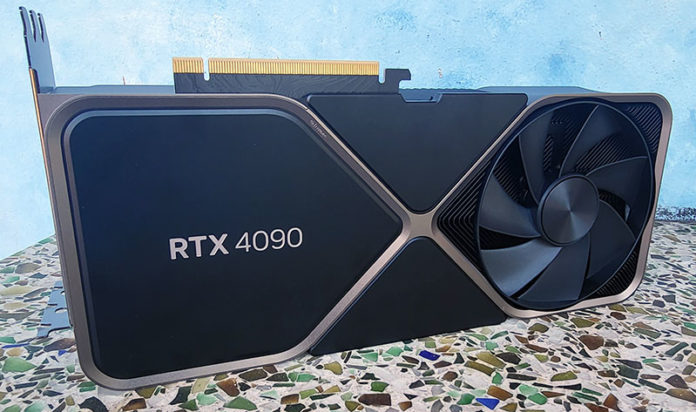



So the side with the GPU and most VRAM is the bottom of the card? Never thought of it that way, and can really only see it from an ATX point of view.